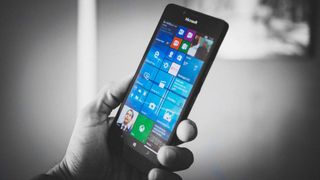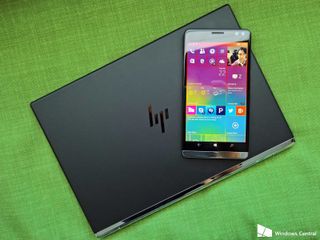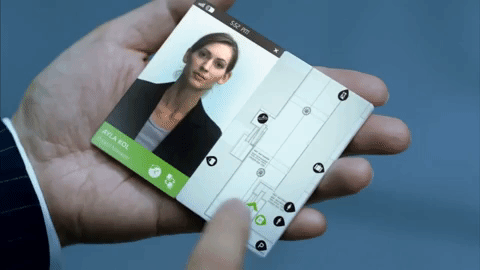It's getting harder and harder to find good Windows phones — and that's just sad
As crazy as it may seem to some people, there are still plenty of Windows phone fans who want Windows phones. The problem is Windows phones are becoming increasingly hard to acquire.

Microsoft did something right when it introduced Windows Phone 7 and the unique Live tile UI. The passion of the Windows phone fan base is proof of that. The information-laden, touch-friendly Start screen was a futuristic departure from the mundane, icon-based UI of the iPhone and hordes of Android phones already on the market.
Users became enamored with the dynamically updating tiles that surfaced news headlines, album art and current song, text messages, email summaries, missed calls, and social media notifications. Live tiles enabled apps that could be "engaged" by users before they were launched. This was a win-win for users and developers. Apps pinned to the home screen vied for a user's engagement by dynamically supplying information. This is a more proactive model for garnering app engagement than the static icon-based UI of iPhones and Android phones. And of course, the early smartphone OSes got the market-share worm. That's bad news for Window phone enthusiasts who want a smartphone.
After years of fighting for market share, Microsoft's mobile efforts seem to be taking an ultra-mobile PC-focused course. Microsoft is done, it seems, with traditional smartphones. But some Windows phone fans still want a plain old, rectangular slab sporting those Live Tiles and fluid UI they love.
The problem is, Microsoft has made finding a smartphone with its mobile OS almost as hard as finding a needle in a haystack.
Now you see them, now you don't
Two years ago Microsoft CEO Satya Nadella communicated that Microsoft was retrenching its mobile efforts from the consumer space.

The news was bad but not devastating. You see, Microsoft promised a few things to assuage those concerned about what retrenchment meant for the company's mobile presence.
Microsoft would continue making phones for three categories of users: value consumers, Windows fans, and the enterprise. This strategy's bright side was that Microsoft was only referring to its first-party smartphones. Manufacturing partners could continue making Windows phones for consumers or the enterprise. Over a dozen OEMs did just that. To convey Microsoft's commitment to mobile, Nadella made the memorable promise that if no one else made Windows phones, Microsoft would. Microsoft kept that promise until the last Lumia, the enterprise-focused Lumia 650 released in early 2016.
Get the Windows Central Newsletter
All the latest news, reviews, and guides for Windows and Xbox diehards.
The Lumia 550, released in 2015, was the last smartphone made for value consumers. And the much maligned 950 and 950 XL were the last smartphones Microsoft released for Windows fans. Of the three, the Lumia 950 for $399 is the only one in stock in the Microsoft online store.
From bad to worse

To add insult to injury, the retrenchment strategy became a full retreat that created an even deeper wedge between Microsoft's mobile efforts and consumers. Microsoft publically announced that Windows 10 Mobile was focused on the enterprise and not the consumer space.
Windows Mobile and enterprise, out of sight out of mind
This signaled to OEM partners, developers and any consumers that were paying attention that Microsoft's mobile OS wasn't meant for the all-important consumer space. This move effectively cut off current and future support these entities would have brought the platform. Windows phones became an even riskier investment for OEM partners, and consequently, even harder to find.
Sadly, the New York City Police department's dropping of 36,000 Windows phones in favor of the iPhone reflects how Microsoft even dropped the ball in the enterprise and in government, its forte.
Partners doing their part
A host of OEMs have tried to make a mark with Windows phones.

Acer, Nuans, Lenovo, Sony and many others have struggled against the barriers of a challenging market and seeming ambivalence from Microsoft.
A future of partnerships and a possibile Surface phone
Alcatel and HP are the OEM partners with the most appealing devices and broadest distribution. For the enthusiast, the HP Elite x3 is a desirable device, but its enterprise focus and high price tag put it beyond consumers' reach. Alcatel's Idol 4S and the European version the Idol 4 Pro are consumer-focused devices with a more appealing price tag.
The older Alcatel One Touch Fierce XL may even appeal to some fans if they can find one.
But I still want a Windows phone!
Despite all of these challenges, there are those who still clamor for a Windows phone.

Unfortunately, the newest first-party device they can get is the year-old enterprise-focused Lumia 650. The two-year old Lumias 950 and 950 XL flagships and the Lumia 550 are the next best options for those seeking "new-ish" first-party Windows phones.
Zeroing in on what an enthusiast wants is easier than getting what he wants. Distribution channels for Windows phones are so limited that most Windows phones, even when new, weren't carried by all, or in some cases any, carriers. The Lumia 950 was available on AT&T, while the 950 XL was limited to Microsoft Stores. Neither of these physical outlets currently carry a Windows phone of any type.
The best option for enthusiasts who want a first-party Windows phone is to order from the online Microsoft Store, Amazon, eBay or some other website.
While Windows phone fans struggle to get an old, used or refurbished first-party Windows phone (and hope that it works), Samsung and Apple will soon release their newest smartphones on all carriers. Our friends, families, neighbors and coworkers will walk into their nearest mall and walk out with a brand-spanking new iPhone or Galaxy Note.
But, whatever, right? They're not Windows phones.
Dawn of a new day
Microsoft has repeatedly suggested that it's done with smartphones. The company seems ambivalent to users who want a Windows-based smartphone as it prepares for what's next.

There's reason to believe that telephony-enabled ultramobile PCs represent the direction the company's going in. If true, the distribution relationship with carriers, which seems to have been sacrificed with Microsoft's forsaken smartphone efforts, may not matter. Ultramobile PCs may be distributed through the same channels PC partners currently distribute PCs. For now, a user who wants a Windows phone will have limited success with carriers but can certainly find a Windows phone if they look hard enough.
Is Microsoft Strangling Windows phone to prepare for concept of a Surface 'phone'?
As time goes on, however, and Windows phones continue to vanish, the search will become more difficult.
Jason L Ward is a columnist at Windows Central. He provides unique big picture analysis of the complex world of Microsoft. Jason takes the small clues and gives you an insightful big picture perspective through storytelling that you won't find *anywhere* else. Seriously, this dude thinks outside the box. Follow him on Twitter at @JLTechWord. He's doing the "write" thing!

